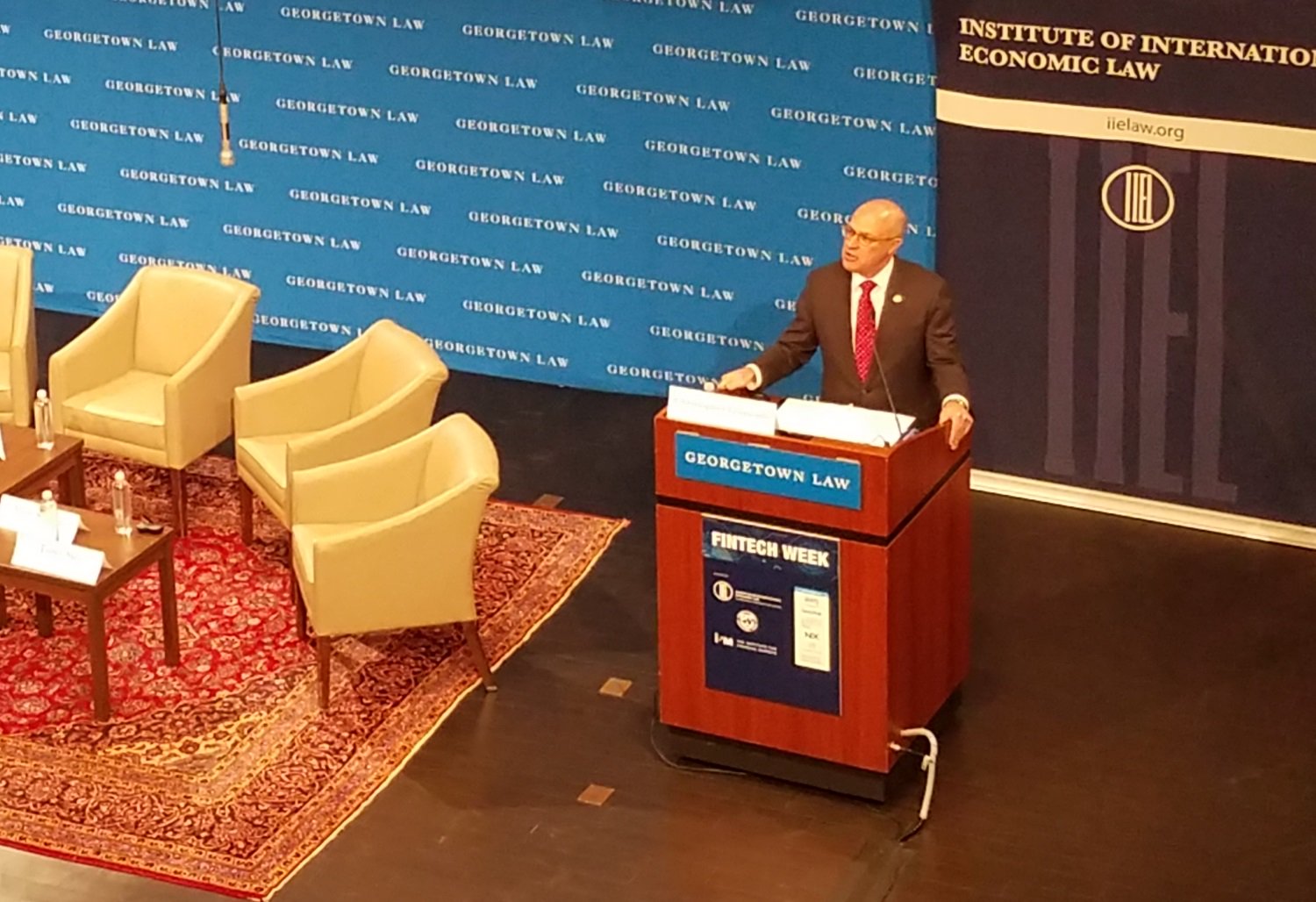Juan Benet: From Idea to Action
Y Combinator received Juan Benet’s application for its summer batch on April 9, 2014, at 2:02 a.m. local time. Attached was a rough outline for a decentralized file-sharing system and a plan of attack. He would use his time at the highly competitive startup accelerator – the same class, “YC S14” that incubated Quora, Ginkgo Bioworks and Blockstack – to “perfect the Filecoin white paper, then publish it,” the application reads. “Need a good name, not sold on this one…”
The 26-year-old Mexican-American dual citizen was applying to the startup incubator after a spell of academic respite, taking graduate level computer science courses at Stanford. Just four years after completing a bachelors degree in the same subject, also at Stanford, Benet had already built a reputation as a world-class coder. In 2010, he launched a gaming startup, Loki Studios, that was acquired by Yahoo in just three years. Then there was his ambitious open-source education platform, Athena – which failed.
This article is part of CoinDesk’s Most Influential 2020 – a list of impactful people in crypto chosen by readers and staff. The NFT of the artwork, by Sarah Zucker, is available for auction at The Nifty Gateway, with 50% of the sale proceeds going to charity.
But it was his latest project, the InterPlanetary File System, or IPFS for short, that was really making an impression. “I think I had heard about IPFS before he applied,” Dalton Caldwell, a partner at YC, said over Zoom. Although Benet wasn’t anywhere near done coding the project – which looked to rewrite the rules for how the internet could work – it was a big vision. Named after J.C.R. Licklider’s dream for an “intergalactic” internet, IPFS would leverage peer-to-peer technologies to build an alternative system to the centralized providers and protocols that currently rule the web.
And it was only the beginning. Benet was a technically proficient coder, a deep thinker and accustomed to working on several complex projects at once. After years of nonstop action, Benet was applying to YC to complete work on his most ambitious series of projects yet. Small details – like deadlines and project names – be damned.
If IPFS looked to unseat the content delivery networks (CDNs) and Hypertext Transfer Protocol (HTTP) that serve as the backbone to today’s fractured web, Filecoin would challenge the dominant cloud providers – like multi-billion dollar web giants Amazon and Google. Moreover, it would do so through an emergent, marginalized and poorly understood (at the time) set of tools: cryptocurrency.
“I hadn’t realized what he was working on at first, just based on the name,” Muneeb Ali, CEO of Blockstack, said over Zoom. Ali was also coming to YC from post-graduate studies, having recently completed a PhD in distributed systems. The two became fast friends, as some of the only prospective founders who pitched blockchain projects. “At YC, you meet the smartest investors out there, and honestly, they couldn’t comprehend crypto,” he said.
It was the summer of Ethereum’s landmark initial coin offering, which only CoinDesk and other nerds cared about, before the money really started rolling in. Despite the breakout success of the decentralized Bitcoin network, and some P2P platforms like BitTorrent, the zeitgeist in Silicon Valley was largely skeptical of decentralization. It was an industry littered with failed projects, and more bluster than building.

Filecoin almost fell into the trap as Demo Day approached. It was the middle of July and Benet had reportedly been heads down on IPFS, even though he was meant to pitch venture funds on Filecoin. “The YC partners were like, ‘well you’re looking to raise money on Filecoin, and you have nothing on Filecoin right now,’” Ali said. “I remember he disappeared. And I mean disappeared. I did not see his face for two weeks.” Eventually, though, Benet emerged with the Filecoin white paper.
BlueYard Capital and Union Square Ventures led that round, kick-starting half a decade of development and many more sleepless nights. While Caldwell and Benet dispute parts of the story, they admit it’s correct in the main. “It wasn’t from scratch, but there was a period where I was shoring up the idea, refining it,” Benet countered. “I wish I could come up with an entire structure like that in two weeks.” In total, it wasn’t two weeks, but six years to fully conceptualize and ship Filecoin – much longer than he expected.
Running for just seven weeks (at time of publication), Filecoin already sees a Netflix’s worth of data stored everyday. It’s on pace to actually rival the centralized cloud and behemoths like Amazon’s S3. It’s a massive project with humble origins, much like Benet.
Play acting
Benet, concerned about potential threats to his family, declined to go into detail about his early life. But there are a few facts already in the public register and we were able to piece together some of his times from conversations with people who’ve known him over the years.
The shorter bio: He was born in Mexico. Moved to San Diego as a teenager. Studied computer science at Stanford though walked away from his graduate program. In terms of lineage? Parts of his family were already in the States when he came over, others lived elsewhere. His grandmother was born in New York. That’s all he would add.
“I understand that these kinds of details matter in profiles. It’s just, in crypto…,” Benet said, speaking obliquely of the fear of being kidnapped for one’s keys. “You’ve probably heard stories from other people about what ends up happening.”
It’s not an unfounded fear, especially for someone who speaks in paragraphs and often gets carried away by the flow of a conversation. That’s to say nothing of Benet’s staggering wealth. I granted the request, struck by his sense of how a decent narrative works.
Growing up, he told me, Benet devoured libraries. Particularly works of science fiction, history and philosophy – subjects that still weigh on his mind. “He knows a lot about a lot of things,” Caldwell, Y Combinator’s head of admissions, told me. “He’s in that category of founder: well-rounded, well-read, broad-based interests, seeing patterns across different industries and even time periods,” Caldwell said. “He’s a very serious and thoughtful person.”
For all this intense focus on the deeper structures of life and society, Benet is willing to invest time in seemingly trivial pursuits. After reading “The Lord of the Rings” saga, a personal favorite, he learned the basics of orcish. It comes down to a fascination with world building, which wouldn’t be complete without the minor details. “Sometimes it takes decades to see the value of a small contribution,” he said.
In high school in San Diego, this passion for stories brought him into the school’s theater. He started acting. He built sets, though directing was what he was good at. “You get to create an interpretation of something,” Benet said. “There are certains kinds of emotions on a stage that are extremely difficult to create anywhere else.”
To complete a minor in drama at Stanford, Benet staged an adaptation of the 1922 poem “The Waste Land,” called “wAsted.” It was part of the university’s larger retrospective on poet T.S. Eliot, and the only script pitched by undergraduates to be produced. (The script is open source on Github and welcomes pull requests.) Benet’s team pulled in details of the modernist legend’s well-documented misogyny and racism, and used the story as a vehicle to comment on plastic pollution.

“At the time, people were talking about these massive gyres in the ocean,” he said, explaining how the play entered that conversation. “We turned it into a visual element in the show. Plastic bottles were strewn onto the stage until the actors were swimming. A turntable was spun into the Great Pacific Garbage Patch.”
“It was a wildly out-of-the-box and technically complex production,” Kendra Allenby, a New Yorker cartoonist and Benet’s co-director, said in an email. “No one besides Juan could have piloted it as deftly while enjoying it so fully.”
Benet still thinks that when live drama works, an audience experiences something that no other art form – especially the limited web-based ones of 2020 – can provide. But there are trade-offs. Namely, there are more minds to affect than can fit in a theater.
“The painful part of staging plays in college is you work for, like, a year and then it runs for a weekend or two,” he said. With film, there’s a digital output: “You can distribute it forever.” In other words, it’s not enough to build worlds, or tell a story, if you can’t change reality.
Immovable roots
In an interview this September, Benet said if you want to have “highly leveraged impact” you could either go into politics, science or start a company. All are competitive, but in Silicon Valley, a smart, well-connected Stanford grad would never hurt for funding (or least the chance of funding). So after college, he took the entrepreneurial route.
Loki Studios was a bootstrap operation out of Palo Alto. The startup developed a single, innovative game, Geomon, which used smartphone location data to reflect real-world conditions, like weather and environments, in the game play. It raised a seed round, expanded to seven employees and cashed out to Yahoo, in 2013. Benet, chief technology officer, didn’t end up transitioning to the search giant.
“My trajectory kind of shifted,” Benet says. “I remember the day. I got really, really frustrated with the state of the world. I was just super, super pissed off about so many random problems.” Sitting in Loki’s office, well before the acquisition, Benet started scribbling a table of 10 intractable problems that need immediate solutions. Why are people hungry? Why do people vote against their own interests? Why do we have a capital structure that causes massive wealth inequality?
Silicon Valley has earned its reputation for techno-solutionism. PayPal pitched itself as a way to democratize payments, Facebook as a platform to give everyone in the world a voice. But it’s also a corner of the planet that often looks outwards, trying to project the order of code on a chaotic world. These platforms, incubated in “rule of law societies,” as Benet says, often fail to consider the shakier foundations of life abroad.
“It was a pretty amazing difference for me,” Benet says, explaining the culture shock of entering the enclosed campus life of a prestigious school that often bleeds out into the surrounding startup scene. “I definitely have a perspective of the world that is really different from most peers who have never lived outside the U.S., who’ve never experienced corruption or a weak rule of law.”
While the internet, and its web of for-profit apps, is a great equalizer, Benet argues, it has also been developed in a way that preserves much of the old status quo. There are walled gardens and rules for some to follow and rules for others to break. That’s how economic production could shift from industrial to surveillance capitalism, without skipping a beat.
But a technocracy needn’t be an unbroken cybernetic loop. The very systems that the powerful maintain and are maintained by, can empower those under the yoke. “From my perspective, it comes down to learning and knowledge and education,” Benet says. In the age of information overload, having knowledge may be an equal constraint to success as not having it. “It’s about discerning what’s true or not,” Benet says. But in the modern mind, this meta-operating system has largely failed.
You couldn’t build something as free and open and that works as well as the internet today
Athena was Benet’s solution, and next project, “a direct-to-consumer learning system for humans.” And one that would be as captivating as a video game. It was a “package manager,” a “cloud” for concepts and a way to model human achievement through computer code. The program mapped what a user knows, or said they did, against a shared tree of knowledge – similar to the way Khan Academy charts various academic disciplines as a constellation.
Unlike Loki, Athena’s products would be open source, or made available for anyone in the world to access, contribute to or modify. In between his two startups, Benet had taken a year to contribute to free code projects and study the internet’s history. His techno-philosophic position hardened. He began to see the modern web as a subversion of the original democratic aims of the internet, and proprietary software as “malicious” in the way it locked down ideas. If Athena was to succeed as a learning platform, users needed open reign.
Around this time, Benet started keeping a blog, which was mostly a way to work through the exciting and difficult things computer science had yet to master. He wrote in the terse though familiar style of a Silicon Valley founder from 2009, like Mark Zuckerberg announcing a new Facebook feature “to let people share information across sites with their friends,” only without equivocating. Several blogs began “At Athena,” an echo of Steve Jobs at WWDC.
They were meant not only meant to promote Athena, but also to open a dialogue with the rest of the world. Benet catalogued a list of worthwhile and lesser-known open source initiatives, and invited others to contribute. Unlike Google’s old rarely followed code of conduct – “don’t be evil,” – Benet’s could be described as “join the good fight.”
Athena failed, beaten out to funding by competing education platforms like Coursera and Udacity, but the writings are preserved. There are schematics for a media player, called Acorn (it dropped from Athena’s “tree of knowledge”) that could convert, remix and play back any file format – something that’s still missing from today’s web. There were also the rumblings of a mind looking to overhaul the internet itself – returning it to its egalitarian roots.
Genius clusters
Protocol Labs began as a distributed company based on Benet’s laptop in his Palo Alto home. He hired academics, students and the late-night-binge-coding raconteurs from around the globe. Part of the reason was, in 2014, when Protocol Labs hung its shingle, there was a dearth of crypto coders in the golden state. Understood primarily as a financial tool at the time, most crypto development happened in the nation’s economic capital, New York, if it happened in the U.S. at all. Global cities like Berlin, Tel Aviv and Hong Kong were bustling, though.
“It was a culture and cost play,” Kathleen Breitman, one of the founders of Tezos, said over Zoom. “Things are more expensive in California for engineering talent, but people really learn how to work in a startup.” Because the industry was still professionalizing in 2014, she said Benet also cultivated a network in and around Stanford. “If you’re going to do something very academically rigorous like inventing a cryptocurrency – and Filecoin certainly pushed the ball forward with consensus algorithms – it behooves you to ingratiate yourself in academic circles,” she said.
Benet rekindled relationships with his former graduate professors at Stanford, including professors of cryptography Dan Boneh and Stellar co-founder David Mazières. He even returned to give a presentation for the school’s Colloquium on Computer Systems Seminar series. In a phone call, Boneh said the young-entrepreneur was an occasional, though inspiring, guest in his seminars. “He spoke to our group about proof-of-replication,” one of the pioneering cryptographic schemes employed in Filecoin, Boneh said. “Some of my students published papers on it. There is definitely collaboration.”
Breitman said the Protocol Labs house, just a stone’s throw away from Stanford, “was buzzing with activity.” He and his housemate Ali Yahya, formerly of GoogleX and now at a16z, would throw salon-inspired dinner parties, where Benet would demo early versions of Filecoin and talk about the decentralized web. Others would present on anything from machine learning results, advances in bioinformatics, experiments with robotics to novel consensus algorithms. This cross-pollination of minds contributed to Filecoin’s innovative design, Breitman said. “It’s smart to be colocated,” she said. But Benet did far more than “cluster genius around him.”
Revisiting his experience with Athena, Protocol Labs began posting research problems on the internet to crowdsource solutions and floated grant funding. It was a method pioneered by DARPA with its RFP program that looked at distributed development to move beyond the limits of traditional corporations.
“I’m a huge fan of Silicon Valley,” Benet said. “Historically, It’s been one of the most important places for technology to develop. But it has been sort of running on fumes for a while.”
New protocols
The history of digital innovation in the 20th century is really the history of government and mega-corporation budgets, and it’s a story Benet loves to tell. At the height of the Cold War, the Advanced Research Projects Agency (ARPA), a furnace for congressional budgets and scientific research, was given enormous leeway to probe the limits of technology. This moneyman linked private corporations with academic institutions and bore fruits such as Teflon, Tang, fasteners, data processors and the internet.
The first nodes of the internet were housed in universities, and funded through federal defense spending. The first internet message was sent between two computer science departments in the U.S., over ARPAnet.
Meanwhile, there were government-sanctioned monopolies like the telecoms giant AT&T, through its innovation hub Bell Labs, that were unconcerned with the double-bottom line and could research and patent tens of thousands of technological innovations. In 1974, for instance, the year the AT&T-incubated Unix was revealed after years of tinkering, Bell Labs had a total budget of more than $500 million for nonmilitary R&D, or about $2.8 billion in today’s dollars. These were institutions with deep enough pockets that could think on timescales longer than the split second many startups exist for today.
“You couldn’t build something as free and open and that works as well as the internet today, because no group would fund it,” Benet said in a 2017 YC podcast. That era of government involvement has come to an end. “The current way that capital markets work does not tend to value this kind of patient innovation,” he says now.
Instead, we have companies juiced by venture capital, that “live or die based on a six- to 12-month timescale,” he says. “The incentive structure is completely broken.” In the hunt for product-market fit and steep returns on investment there is little room for research that only inquires, or development that hits dead ends. Benet hopes to reverse this trend, and sees himself as a part of a larger trajectory towards decentralization.
“I think we’re very close to shifting the entire production model of software,” Benet says. “There’s gonna be a tipping point sometime, and it’s not really clear what the turning point will be, and what’s gonna achieve it, but at some point, the creation of software systems and software applications will only be limited by people’s energy and attention on a project, as opposed to capital.”
While Protocol Labs does have well-endowed investors (Digital Currency Group, CoinDesk’s parent company, included), Benet says these corporate fat cats are “mission aligned.” Plus, after the firm’s $205.8 million initial coin offering in 2017, a record for the time, it has a runway to get its products right before rushing to launch. “Building something like Bell Labs is the long-term goal, but we’re far away from being able to do something like that,” Benet says. “There are so few companies in the world that have a shot of being able to do something like that.”
But Benet is expanding on the model, and searching for ways to compensate people that add value to the network, even if removed from Protocol Labs or Filecoin itself. A technically complex blockchain – it leverages the cutting-edge cryptographic schemes like SNARKs, delay functions and proof-of-replication consensus – Benet believes funding models will evolve to reward valuable contributions over long time scales. Protocol Labs is working on models that can compensate the longline of open-source contributors whose insights paved the way – even if these solutions were sidelined decades ago.
Most of this work is done with Sourcecred, a project to measure and reward value creation in communities and open-source projects that is taking hold in the crypto world. Once these Web 3.0 models of business development are the norm, “It’ll be an extremely generative period where lots of new technology is going to get built,” Benet says.
“Bell Labs hired all these brilliant scientists and let them loose. Protocol Labs is kind of doing a 21st century version of that,” Boneh said. “But instead of housing its workers in the same building, they are exploring how to do research in an internet-native way. Dalton Caldwell, of YC, said Protocol Labs distributed structure follows in the footsteps of decades of open source work. “We already know how to do distributed development across time zones – that’s been the Linux kernel since the 90s,” but there’s something to the idea that Protocol Labs is expanding on in the tradition of the 20th century research and development hubs.
In the past five years, much of Protocol Lab’s experimentation has been open source and freely usable by anyone. Some of this research is ancillary to the Lab’s needs, like a peer-to-peer networking stack that powers Ethereum 2.0 and Polkadot. But others are complementary, like Coin List. Built in collaboration with the crowdfunding platform AngelList, Coin List was built so Filecoin – and any blockchain project – could issue tokens without bumping into securities law.
If you were to compile all the storage currently on the Filecoin network – over one exabyte of storage just a few months after launch – into 16 terabyte hard drives, the stack would be two and half times the size of the Burj Khalifa. “We were genuinely unsure months ago whether it would be possible to build decentralized storage networks at scale,” Benet says. “We thought it’d be 1/100th of the size.” IPFS is already in use by applications serving more than one million users, and on any given week, the IPFS gateway manages 50 terabytes of data. More, it is gaining adoption among major Web 2.0 players.
Still, “Bell Labs is credited with radio astronomy, the transistor, the laser. I don’t think anything in cryptocurrency compares to that yet,” Breitman said.
Filecoin’s wager
Filecoin is not the first decentralized file storage network. It’s not even the first to be built on a blockchain. But Professor Boneh says it is likely the most sophisticated. Plus, this may be the first time in the history of computer science a project like this could conceivably succeed.
“Generally, computer systems tend to evolve with the least complicated systems first, then there’s more and more complexity which increases functionality. Verifiability is the next layer of complexity,” he said. Fast internet, better crypto primitives that aren’t simply theoretical and better CPUs all needed to emerge for Filecoin to happen.
Web 3.0 is already eating the world.
After years of research and development, with no shortage of production delays, Filecoin shipped this summer. “Think about how many launches, protocol launches, break or have to be rolled back,” Caldwell said. He notes that people are already building on it, has miners in 40 countries and there are multiple implementations of the client. Though it isn’t exactly clear what “the killer use case” will be. “What is the evergreen use case that is used in production by a lot of people in a non-test way,” he said.
Filecoin’s wager is that there’s a vast amount of storage that individuals or businesses can monetize, and that cryptocurrency could efficiently incentivize this market. It creates a marketplace where buyers that need file backups can find sellers. Several different kinds of miners record these transactions onto the blockchain, ensure that data is being kept properly and retrieve the files – which will be split up and distributed across the network to ensure data integrity.
When speaking about the network, Benet often projects out into an unknown future, where demand is assured. It may take years, but decentralization is the phase of the internet. People were at first skeptical about cloud computing, he notes. “In the transition from IBM and other providers, Amazon and Google first focused on a lot of smaller businesses and smaller users who would just kind of serve themselves to the systems. And once they got them to a certain scale…” Benet said. People may not realize it, but “Web3 is already eating the world.”
While Protocol Labs doesn’t have a business development department, it is focused on making the network developer friendly and robust enough to rival the capacity of cloud monoliths. The Protocol Lab’s network is also expanding through collaborations with crypto and traditional projects like ConsenSys and the Shoah Foundation, an organization preserving testimony from genocides. Filecoin and IPFS will ensure that these invaluable human memories are never doctored or deleted.
“Filecoin, the way the network is constructed, can uniquely battle misinformation. Facts are stored immutably and can be cited wherever they are needed,” Pooja Shah, Filecoin project lead, said in a fireside chat in November. “If the Filecoin standard is successful, data storage will become orders of magnitude cheaper than it is today, which means internet startups will be able to build their companies more cheaply to compete with incumbents and tech giants,” Marvin Ammori, civil rights activist and general counsel of Protocol Labs, said over email.
This increased competition could provide lower prices and more choices for consumers. It could also lead to entirely new types of applications that can programmatically store themselves and interact with Filecoin without human involvement. “These will be entirely new forms of business relationships,” Benet said. He spells out something like a web browser that could hash everything to IPFS, load information and applications from Filecoin and supply it directly to users – bypassing the extractive web systems today.
World building
Returning to the field of art, or genuine human expression, Benet thinks that human experiences will only get more and more web mediated. In fact, the next big web interface will be strapped to your head. Virtual reality “will be as revolutionary as the smartphone,” he said. But it’s important to get the primitives right the first time. “Right now, it’s on track to be owned by the social data monopolies. It would really be a kind of tragedy of our VR experiences and our VR world are run by the same rules that our social media world is run by.”
With systems like Filecoin and technologies like non-fungible tokens, the crypto community can ensure the metaverse – this entirely new realm of human possibility – can maintain open standards and civil rights like privacy and data ownership. “If you can get those things sorted out in the next couple of years for those massive scale VR use cases,” Benet said, “then we have a really good shot.”










